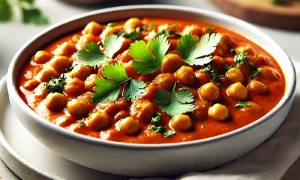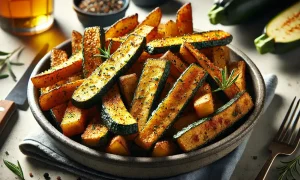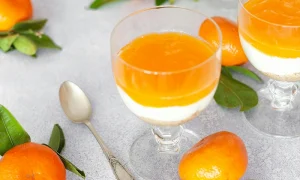Is it Healthy & Safe to Eat the Banana Peel?

Have you ever wondered if you can eat banana peels? The answer is yes, you can! In fact, banana peels are not only edible but also packed with several key nutrients, including potassium, dietary fiber, polyunsaturated fats, and essential amino acids. Eating banana peels can also help reduce food waste and save money, as you can use the entire banana instead of throwing away the peel.
If you’re still unsure about eating banana peels, it’s important to note that they should be washed thoroughly before consumption to remove any dirt, pesticides, or bacteria. You can eat banana peels raw, cooked, or even blended into smoothies. The riper the banana, the sweeter the peel will taste, so keep that in mind when deciding how to prepare them. While the texture may take some getting used to, adding banana peels to your diet can be a great way to boost your nutrient intake and reduce waste.
Nutrition and Health Benefits of Banana Peels
You may be surprised to learn that banana peels are not only edible but also packed with nutrients that can benefit your health. Here are some of the key nutrients and health benefits of banana peels:
Fiber
Banana peels are a great source of dietary fiber, which can help regulate your digestive system and keep you feeling full for longer. A medium-sized banana peel contains about 3 grams of fiber, which is about 10% of your daily recommended intake.
Potassium
Banana peels are also rich in potassium, a mineral that plays a key role in regulating your blood pressure and heart health. A medium-sized banana peel contains about 400 milligrams of potassium, which is about 10% of your daily recommended intake.
Vitamins and Minerals
In addition to fiber and potassium, banana peels are also a good source of other important vitamins and minerals, including vitamin B6, vitamin C, magnesium, and iron. These nutrients can help support your immune system, promote healthy sleep, and keep your bones and muscles strong.
Polyunsaturated Fats and Essential Amino Acids
Banana peels also contain small amounts of polyunsaturated fats and essential amino acids, which are important for maintaining healthy skin, hair, and nails. These nutrients can also help improve your mood and reduce your risk of depression.
Antioxidants and Carotenoids
Banana peels are rich in antioxidants and carotenoids, which can help protect your cells from damage caused by free radicals. These compounds may also help reduce your risk of heart disease and certain types of cancer.
Digestive Health
Eating banana peels can help improve your digestive health by promoting regular bowel movements and reducing your risk of constipation. The fiber in banana peels can also help feed the beneficial bacteria in your gut, which can improve your overall gut health.
Blood Sugar Levels
Banana peels may also help regulate your blood sugar levels by slowing down the absorption of sugar into your bloodstream. This can be particularly beneficial for people with diabetes or those at risk of developing the condition.
Overall, banana peels are a nutritious and healthy addition to your diet. So next time you eat a banana, consider eating the peel too!
Environmental Benefits of Using Banana Peels
Another plus to eating banana peels is their environmental benefits. By eating banana peels, you can help reduce food waste and promote sustainable food practices.
Banana peels can also be used for a variety of other purposes, such as composting, DIY plant fertilizers, or even as a natural teeth whitener.
Preparing Banana Peels for Consumption
If you’ve decided to try eating banana peels, you’ll need to know how to prepare them properly. Here are some tips to help you get started:
Washing Banana Peels
Before you eat banana peels, it’s important to wash them thoroughly. Use a scrub brush and warm water to remove any dirt or debris. If you’re concerned about pesticides or other chemicals, consider buying organic bananas or washing the peels with a mixture of water and vinegar.
Cooking Banana Peels
While you can eat banana peels raw, many people prefer to cook them first. Boiling is a popular method that can help soften the texture and reduce the bitter taste. Simply add the peels to a pot of boiling water and cook for 10-15 minutes, or until they’re tender. You can also fry banana peels in oil until they’re crispy.
Blending Banana Peels
If you don’t like the texture of cooked banana peels, you can also blend them into smoothies or juices. Simply cut the peels into small pieces and add them to your blender along with other fruits and vegetables.
Sweetening Banana Peels
Banana peels are naturally bitter, but there are ways to sweeten them up. One option is to cook them with sugar or honey. Another is to use riper bananas, which have sweeter peels than less ripe ones.
Overall, preparing banana peels for consumption is a simple process that can open up a whole new world of culinary possibilities. With a little bit of experimentation, you might find that you enjoy the taste and texture of this often-overlooked part of the banana.
Recipes Using Banana Peels
If you’re wondering what to do with your leftover banana peels, there are plenty of recipes to try. Banana peels are edible and can be used in a variety of dishes, from smoothies to curries. Here are a few ideas to get you started:
Smoothies
Banana peels can add a boost of fiber to your smoothies. Simply remove the stem and blend the peel with your favorite fruits and veggies. You can also freeze the peels and add them to your smoothies later.
Banana Bread
Banana peels can be used in banana bread recipes to add a subtle banana flavor. Simply chop the peels into small pieces and mix them into the batter before baking.
Curries
Banana peels can be used in curries to add a unique texture and flavor. Simply chop the peels into small pieces and add them to your favorite curry recipe.
Chutneys/Sauces
Banana peels can be used to make chutneys and sauces. Simply chop the peels into small pieces and cook them with your favorite spices and seasonings.
Salad
Banana peels can be used in salads to add a unique texture and flavor. Simply chop the peels into small pieces and mix them with your favorite greens and veggies.
Dessert
Banana peels can be used in desserts like pies and cakes. Simply chop the peels into small pieces and mix them into the batter before baking.
When Are Banana Peels Safe to Eat?
Banana peels are generally safe to eat, but there are a few things you should keep in mind.
Firstly, it is important to wash the banana peel thoroughly before eating it. This is because bananas are often sprayed with pesticides and other chemicals during the growing process, which can remain on the peel. Washing the peel can help remove any residual pesticides or chemicals.
Secondly, you should avoid eating banana peels that have been treated with a thinner or other chemicals. These chemicals can be harmful to your health and can cause stomach upset, nausea, and other digestive problems.
It is also important to note that banana peels are high in fiber, which can be difficult for some people to digest. If you have a sensitive stomach or digestive issues, you may want to start with small amounts of banana peel and gradually increase your intake over time.
Overall, while eating banana peels may not be for everyone, they can be a nutritious and sustainable addition to your diet. So next time you’re enjoying a banana, consider giving the peel a try and reaping all the health and environmental benefits it has to offer.






